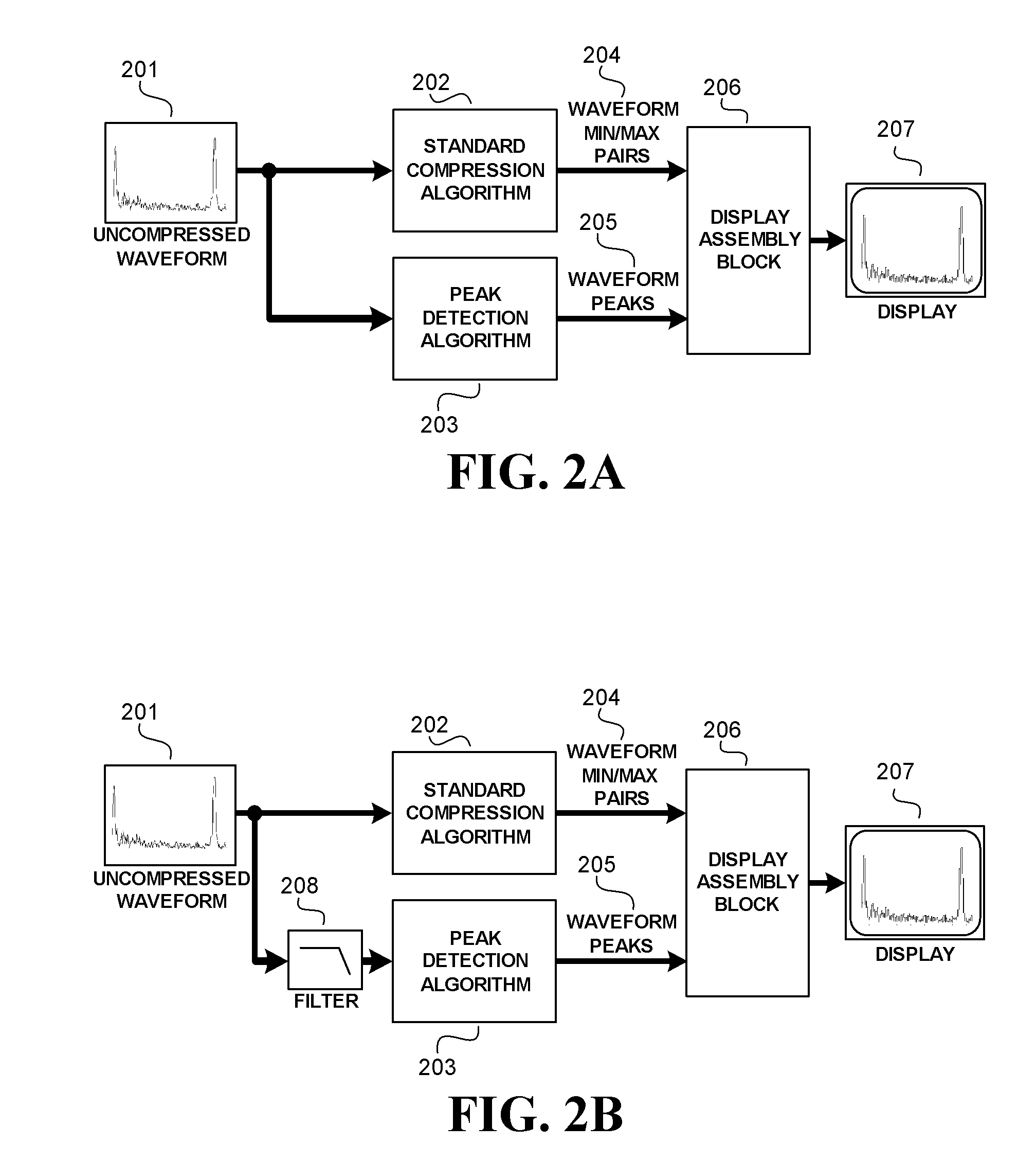Peak visualization enhancement display system for use with a compressed waveform display on a non-destructive inspection instrument
a display system and compressed waveform technology, applied in static indicating devices, instruments, code conversion, etc., can solve problems such as cracking (igscc, encounter complex, etc., to reduce the likelihood of a noise spike or the like, prevent noise spikes, and reduce the noise level of uncompressed waveforms
- Summary
- Abstract
- Description
- Claims
- Application Information
AI Technical Summary
Benefits of technology
Problems solved by technology
Method used
Image
Examples
Embodiment Construction
[0042]FIG. 1 illustrates a typical non-destructive inspection (NDI) instrument 101, specifically an ultrasonic flaw detector, using the Peak Visualization Enhancement (PVE) system of the present disclosure to inspect a flaw 108 within an object under inspection 102. The details and methods of flaw detection with such an instrument should be well known to those skilled in the art, but are presented in brief herein for reference.
[0043]The transducer element 104 is acoustically coupled to a wedge element 105 which is, in turn, acoustically coupled to the object under inspection 102. The ultrasonic flaw detector 101 excites transducer element 104 through transducer cable 106. Responsive to said excitation, the transducer element 104 emits an ultrasonic pulse which propagates through the wedge element 105. The wedge element 105 further transmits said ultrasonic pulse into the object under inspection 102 at a particular angle, said angle selected to meet the needs of the inspection operat...
PUM
 Login to View More
Login to View More Abstract
Description
Claims
Application Information
 Login to View More
Login to View More - R&D
- Intellectual Property
- Life Sciences
- Materials
- Tech Scout
- Unparalleled Data Quality
- Higher Quality Content
- 60% Fewer Hallucinations
Browse by: Latest US Patents, China's latest patents, Technical Efficacy Thesaurus, Application Domain, Technology Topic, Popular Technical Reports.
© 2025 PatSnap. All rights reserved.Legal|Privacy policy|Modern Slavery Act Transparency Statement|Sitemap|About US| Contact US: help@patsnap.com



